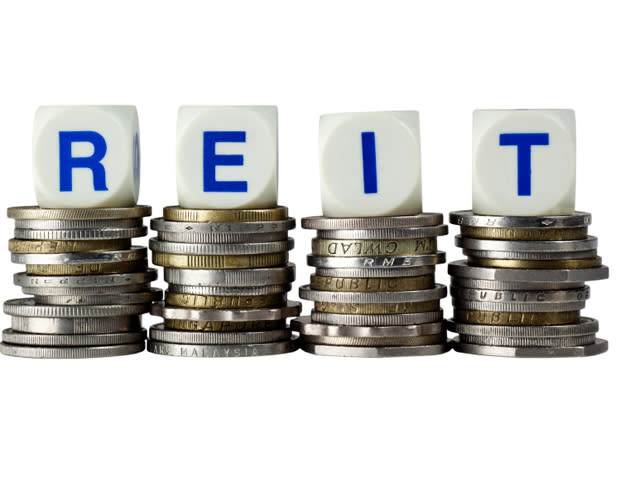7 High-Yield ETFs to Help You Diversify Your Basket
The hunt for yield never ends. Even though interest rates are rising, investors are hunting for different types of securities that throw off income. The good news is that there are high-yielding securities out there, and you don’t have to get too aggressive to find them.
Finding high yields with reduced risk is a cornerstone of my investment advisory newsletter, The Liberty Portfolio. You can’t just grab any old investment with a high single digit next to the “%” sign. Fortunately, there are some interesting high-yield ETFs out there that get you what you need, along with diversification.
Diversification allows for some of the securities in a basket to fall on hard times without taking down the entire ETF. These ETFs also give you decent yields without killing you on fees.
InvestorPlace - Stock Market News, Stock Advice & Trading Tips
Take a look at these seven high-yield ETFs. They aren’t necessarily what The Liberty Portfolio would buy because they carry more risk than I like, but some investors may find them interesting.
ETF 1:UBS ETRACS
Source: Shutterstock
The UBS ETRACS Linked to the Wells Fargo Business Development Company Index ETN (NYSEARCA:BDCS) has a 9.18% yield, an expense ratio of 0.85% and carries 40 business development companies (BDCs).
BDCs invest in what’s known as middle-market businesses. These companies desire growth capital but don’t have access to banks because they are still too risky for traditional finance. The model is such that BDCs borrow cash at low rates but then lend it at higher rates to earn a spread. BDCs must pay out 90% or more of net taxable income to shareholders, not unlike Real Estate Investment Trusts (REIT).
ETF 2: Ares Capital Corporation
Source: Pictures of Money via Flickr
The largest holding right now is Ares Capital Corporation (NASDAQ:ARCC) with a 10% position and Corporate Capital Trust Inc (NYSE:CCT) at 8%.
My most favored types of income security are preferred stocks. They trade like stocks, yet have the qualities of bonds, and are higher in the capital stack than stocks.
ETF 3: Global X SuperIncome Preferred
Source: Shutterstock
The Global X SuperIncome Preferred ETF (NYSEARCA:SPFF) focuses only on these preferred stocks, which are generally issued by financial and insurance companies. So you find preferred issues of Wells Fargo & Co (NYSE:WFC) and Citigroup Inc (NYSE:C) in the ETF.
The yield is 7.38% is generous, the expense ratio is 0.58%, and the standard deviation is only about 4.2. That’s because preferred stocks stay in tight trading ranges.
There isn’t a discussion of high-yield investments without mentioning junk bonds. These are corporate bonds that generally don’t have a ton of security backing them. Consequently, they pay higher yields. While I personally prefer to buy single bonds in companies that I know well and are very liquid, some investors prefer ETFs for junk bonds.
ETF 4: SPDR Bloomberg Barclays Short Term High Yield Bond
Source: ©iStock.com/123ArtistImages
SPDR Bloomberg Barclays Short Term High Yield Bond ETF (NYSEARCA:SJNK) has a 5.61% yield with a 0.4% expense ratio.
The ETF is heavily weighted towards consumer cyclicals and energy, with 41% in each, and the rest in industrials. Energy is not as wobbly as it was three years ago, so the fund is also a bit safer.
ETF 5: YieldShares High Income
Source: Shutterstock Source: flickr.com/Will McGugan
How about a basket of a basket of securities? The YieldShares High Income ETF (NYSEARCA:YYY) is a closed-end fund which is the ultimate in diversification because it owns a basket of about 30 other closed-end funds (CEFs).
CEFs are different from mutual funds, in that the management company raises money via an IPO, and then invests that money in a specific strategy. It trades on the stock market and you can get shares throughout the day, not just at the day’s close, as it is with mutual funds.
The blend is such that you get a roughly 80-20 split in income from stocks vs. bonds. Because of all the fees the fund must pay to all the funds inside of it, the expense ratio is 1.72%. But the yield is 8.5%
ETF 6: PowerShares CEF Income Composite Portfolio
Source: ©iStock.com/s-a-m
The PowerShares CEF Income Composite Portfolio (NYSEARCA:PCEF) takes a very similar approach to the YYY. The difference is that is it more diversified, with more than 130 CEFs, and takes a less risky approach, focusing more on debt instruments. This higher degree of diversification and focus on debt results in a fund that carries a bit less risk as dictated by the standard deviation.
The YYY has a 4.36% average annual return over the last five years, with a standard deviation of 10. The PCEF has a 5.2% return with an SD of only 7.2. Still, you are paying up for this approach: Expense ratio runs 2%, but it pays out 7.2%. Its expense ratio is 0.58%.
ETF 7: Global X SuperDividend
Source: Shutterstock If you are in the mood for international stocks, the Global X SuperDividend ETF (NYSEARCA:SDIV) pays 7.05%. That’s actually substantially higher than you will get from any domestic fund, and with a price-to-earnings ratio average of only 12, I also see the stocks in this fund as relatively cheap.
The fund has moved more and more away from international stocks recently. Its top 10 holdings now consist of five U.S.-based stocks — mostly REITS.
SDIV also invests in a utility based in France, a New Zealand domestic airline, and an Austrailia media conglomerate is its top holding.
Source: ©iStock.com/joxxxxjo Speaking of real estate, let’s shift over to the IQ U.S. Real Estate Small Cap ETF (NYSEARCA:ROOF) yields 5.7%. Most people associate real estate stocks with REITS, which are generally large cap businesses with long dividend histories.
But you can find REITs that are still rather small in market cap. ROOF’s top ten holdings include two health care REITs, an office/retail REIT, an education REIT, a commercial building REIT, a hotel REIT — the diversification is excellent.
Its expense ratio is 0.7% but be warned: As a small cap-driven ETF, it is volatile, with a 5-year standard deviation of 13.7.
Lawrence Meyers is the CEO of PDL Capital, a specialty lender focusing on consumer finance and is the manager of The Liberty Portfolio at www.thelibertyportfolio.com. He does not own any stock mentioned. He has 23 years’ experience in the stock market, and has written more than 2,000 articles on investing. Lawrence Meyers can be reached at TheLibertyPortfolio@gmail.com.
The post 7 High-Yield ETFs to Help You Diversify Your Basket appeared first on InvestorPlace.








